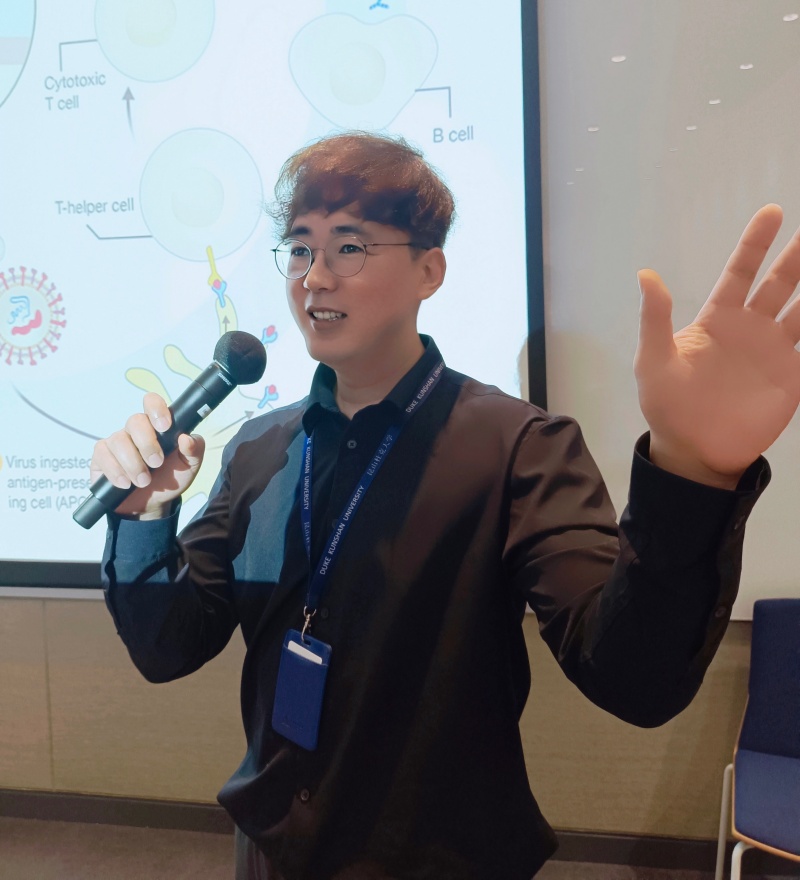A Duke Kunshan professor concerned by falling attention levels caused by online learning, has developed a strategy to tackle the issue.
Joohyun Lee, assistant professor of biology, uses as blended learning system that combines lectures and labs with group work and a social media project aimed at fostering greater engagement. His methods have proved popular and successful not only with online students, but also with those studying in person.
“The aim is to get students to take control of their learning by a motivating them to listen and think, and also by showcasing what they’ve learned in their own world,” said Lee.
“I do that by encouraging students to continue to discuss and think about the biology they’ve learned in class and outside the classroom. One way to do that is by using their personal social media platforms,” he added.

Lee, who joined DKU just over a year ago, noticed issues with online students while teaching a first-year biology course. Some students found it difficult to engage with classes, often due to a poor work environment and a tendency to treat online courses like a video clip, which led to a drop in attention and motivation, he said.
In order to address the problem, Lee looked for ways to give students “ownership” of their learning, settling on a strategy that spanned both home and in class methods.
In lectures and labs, he introduced online group activities, which he called “think pair, share” sessions, designed to encourage greater engagement, particularly among online students. In these sessions groups of three to four students are given a question to discuss and answer, based on the lecture or lab content. Lee stresses that no-one should dominate discussion and usually gives them some real-world connection, so they are more relevant to the students’ daily lives. Each student is asked to answer the question in writing, laying out both the group ideas and their own.
The course is for freshmen, who are used to passive learning, but the think pair share system encourages them to be more active, said Lee, as they know they will have to use the class information to answer a question and engage with their peers.
“I emphasise understanding concepts instead of memorizing,” he said.
Lee reinforces engagement by telling students they will have to create a five-minute video presentation for their personal social media platforms at the conclusion of the course, covering what they have learned. Knowing they will have to make the presentation encourages student to pay attention in classes, while putting it on their personal social media platforms gives them a greater sense of ownership of their learning, according to Lee.
“I saw that when students were creating posts for their personal social media accounts they were deeply engaged and took full ownership of them,” he said. “That gave me the idea to combine their ownership of social media with my learning strategy.”
Reaction to Lee’s methods has been overwhelmingly positive, with motivation and grades rising among distance-learning students.
“I have been put in a position where I need to understand the concept as a whole, rather than the minute details,” one student told Lee recently, in an email, before thanking him for putting him in the “mindset where I try to understand rather than memorize.”
Inspired by the encouraging reactions to his strategy and rising grades, Lee plans to continue with it when online classes end. “Student motivation and participation has increased, and satisfaction levels among students are very high too,” he said.
To watch a selection of student presentations from professor Lee’s class click the links below:

